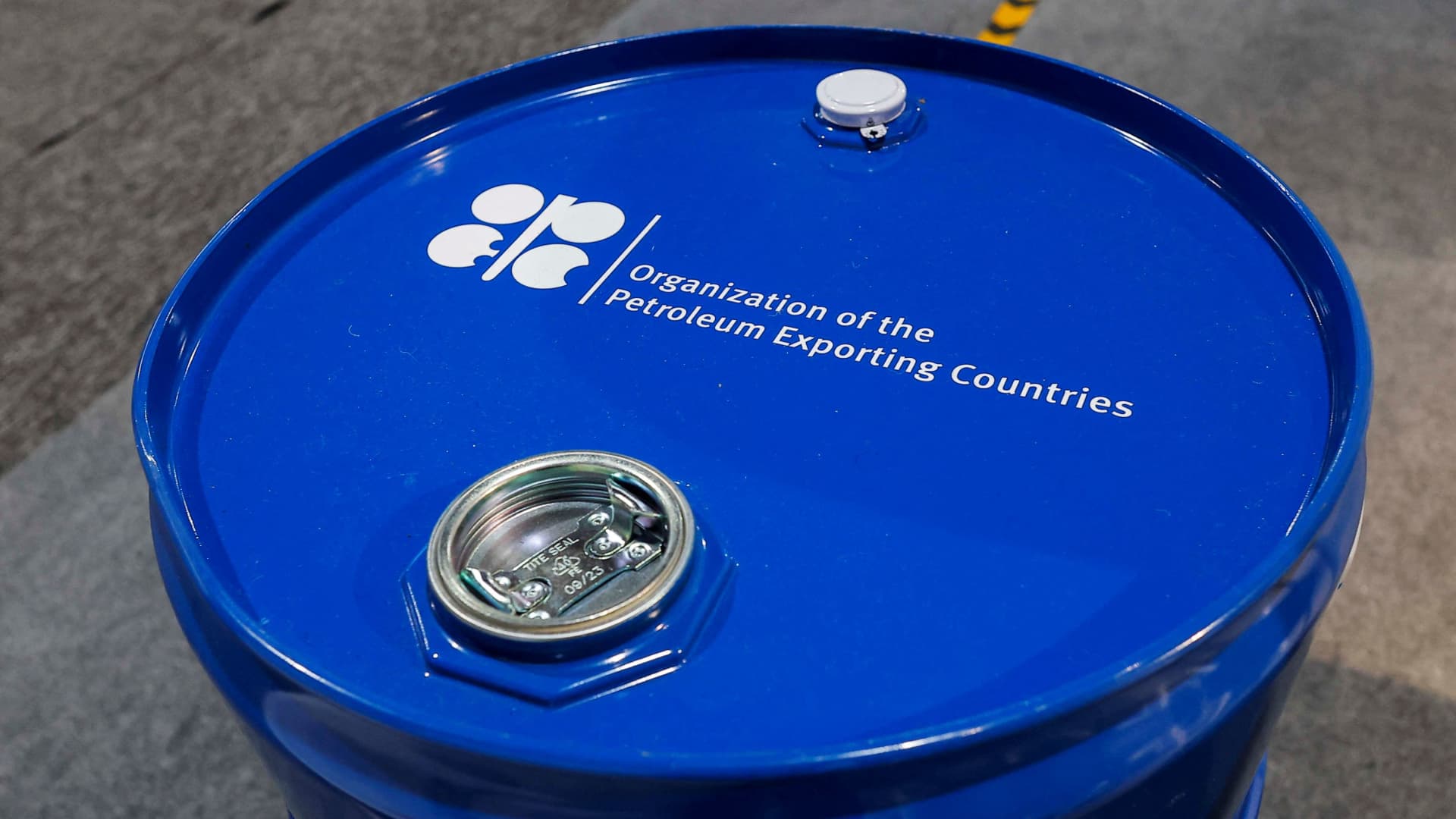OPEC+ producers led by Saudi Arabia have launched a “slow grind” oil price war that could last for more than a year, according to Bank of America. OPEC+ has agreed to surge oil supply by 411,000 barrels per day for two consecutive months, after cutting production for years. Oil prices fell to the lowest level in four years earlier this week in response, as the supply increase has coincided with President Donald Trump’s trade war. “The question is not so much whether OPEC+ is in the midst of a price war but rather what kind of price war it is and what the objectives are,” Francisco Blanch, head of global commodities and derivatives research at Bank of America, told clients in a Wednesday note. The Saudis have three central goals, the strategist said. Long war for market share The Kingdom wants to claw back market share from surging U.S. shale production, Blanch said. It also wants to punish OPEC+ members who have cheated on their production cuts. And low oil prices would soften the inflationary impact of Trump’s tariffs. “There is little doubt that OPEC+ needs a plan to recover some market share after the spectacular increase in US oil output during the past 15 years,” Blanch told clients. Goldman Sachs also sees the Saudis shifting OPEC+ strategy away from a focus on stabilizing prices to “strategically disciplining US shale supply and on supporting internal cohesion and oil demand.” The firm expects the group to boost supply by another 411,000 barrels in July. OPEC+ has waged three price wars in the over the past 30 years with Brent prices averaging $45 per barrel during the two most recent conflicts in the past decade, Blanch said. The most recent price war in 2020 lasted just four months as the Saudis sought to force Russia into agreeing to production cuts. This time around, however, the oil market is likely facing a protracted battle over prices that could drag on for 12 to 18 months, Blanch said. “This latest OPEC+ action appears to us more as a ‘slow burn’ than a ‘fast and furious’ price war,” Blanch said. “Because the price war has a market share element, a political element, and a group discipline element, we believe it is likely going to be long.” U.S. shale already taking a hit Low oil prices combined with tariffs and recession fears are already “beginning to impact supply, with US shale producers signaling the beginning of a pullback in activity,” Citi analysts told clients on Thursday. Diamondback Energy CEO Travis Stice warned shareholders this week that U.S. shale production is likely to peak and start to decline to due to tumbling oil prices. Diamondback is the sixth largest oil producer in the lower 48 states and the third biggest in the prolific Permian Basin, according to data from Enverus. Adjusted for inflation, there have only been two quarters since 2004 when front-month oil prices have been as cheap as they are now, excluding 2020 when the Covid-19 pandemic swept the world, Stice told investors in his Monday letter. The operators that Diamondback is speaking with all agree that “this oil price doesn’t work,” the company’s President Matthew Kaes Van’t Hof told analysts on the company’s first-quarter earnings call on Tuesday. Bank of America sees Brent prices potentially hitting $58 per barrel in the second quarter, though the firm is maintaining a price forecast of $62 for 2025. Goldman Sachs has cut its forecast by $2 to $3 this year: It now sees Brent and U.S. crude averaging $60 and $56, respectively, for the remainder of 2025. Diamondback would halt production growth with U.S. crude prices in the $40s and output would slow with prices in the $50s, Van’t Hof said. Oil prices need to be in the mid to high $60s and on a path to $70 for production to grow, he said.
OPEC+ is waging an oil price war — what the cartel wants and how long the fight might last











